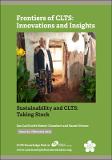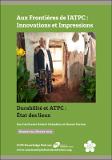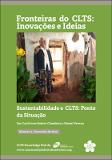Sustainability and CLTS: Taking Stock
| dc.contributor.author | Cavill, Sue | |
| dc.contributor.author | Chambers, Robert | |
| dc.contributor.author | Vernon, Naomi | |
| dc.date.accessioned | 2015-02-25T10:44:23Z | |
| dc.date.available | 2015-02-25T10:44:23Z | |
| dc.date.issued | 2015-02 | |
| dc.identifier.citation | Cavill, S. with Chambers, R. and Vernon, N. (2015) ‘Sustainability and CLTS: Taking Stock’, Frontiers of CLTS: Innovations and Insights Issue 4, Brighton: IDS | en |
| dc.identifier.isbn | 978-1-78118-222-2 | |
| dc.identifier.uri | https://opendocs.ids.ac.uk/opendocs/handle/20.500.12413/5859 | |
| dc.description.abstract | Each of three overlapping phases in the history of CLTS has presented its own major features, preoccupations and priorities: 1. Early growth and acceptance. Creativity, rapid learning, credibility. Refining methods, start-ups in countries, establishing bridgeheads, facing down scepticism, resistance and rejection, finding and supporting champions. 2. Going to scale. Rapid national, international and organisational spread. Maintaining quality in training and performance, verification, knowing the field realities. 3. Mature engagement. Sustainability and scope. Post-ODF (Open Defecation Free) follow-up, marketing and the sanitation ladder, problem nvironments, environmental risk when pits are emptied or replaced, diversity, depth and breadth of research to refine CLTS, wider frontiers. In recent years, sustainability of ODF conditions in rural areas has repeatedly been a top concern in workshops and conferences. Other issues of this series will explore and review wider frontiers and aspects of scope and diversity. This issue seeks to summarise and take stock of what we know about sustainability, practical implications of that knowledge, and what more we need to know. | |
| dc.description.sponsorship | This series is funded by Sida | |
| dc.language.iso | en | en |
| dc.publisher | IDS | en |
| dc.relation.ispartofseries | Frontiers of CLTS;4 | |
| dc.rights | This series is licensed under the Creative Commons Attribution-Non-Commercial-NoDerivs 3.0 Unported License (http://creativecommons.org/licenses/by-nc-nd/3.0/). Attribution: You must attribute the work in the manner specified by the author or licensor. Non-commercial: You may not use this work for commercial purposes No Derivative Works: You may not alter, transfer, or build on this work. Users are welcome to copy, distribute, display, translate or perform this work without written permission. For any reuse or distribution, you must make clear to others the licence terms of this work. If you use the work, we ask that you reference the CLTS website (www. communityledtotalsanitation.org) and send a copy of the work or a link to its use online to the following address: CLTS Knowledge Hub, Institute of Development Studies, University of Sussex, Brighton, BN1 9RE, UK (CLTS@ids.ac.uk). Consent has been given to take and use all the photos in this issue. | en |
| dc.rights.uri | http://creativecommons.org/licenses/by-nc-nd/3.0/ | en |
| dc.subject | Health | en |
| dc.subject | Participation | en |
| dc.subject | Water | en |
| dc.title | Sustainability and CLTS: Taking Stock | en |
| dc.title.alternative | Durabilité et ATPC : État des lieux | fr |
| dc.title.alternative | Sustentabilidade e CLTS: Ponto da Situação | por |
| dc.type | Series paper (IDS) | en |
| dc.rights.holder | Institute of Development Studies | en |
| dc.identifier.externaluri | http://www.communityledtotalsanitation.org/resource/frontiers-clts-issue-4-sustainability-and-clts-taking-stock | en |
| dc.identifier.team | Participation | en |
Files in this item
This item appears in the following Collection(s)
Except where otherwise noted, this item's license is described as This series is licensed under the Creative Commons Attribution-Non-Commercial-NoDerivs 3.0
Unported License (http://creativecommons.org/licenses/by-nc-nd/3.0/).
Attribution: You must attribute the work in the manner specified by the author or licensor.
Non-commercial: You may not use this work for commercial purposes
No Derivative Works: You may not alter, transfer, or build on this work.
Users are welcome to copy, distribute, display, translate or perform this work without
written permission. For any reuse or distribution, you must make clear to others the licence
terms of this work. If you use the work, we ask that you reference the CLTS website (www.
communityledtotalsanitation.org) and send a copy of the work or a link to its use online to
the following address: CLTS Knowledge Hub, Institute of Development Studies, University of
Sussex, Brighton, BN1 9RE, UK (CLTS@ids.ac.uk).
Consent has been given to take and use all the photos in this issue.




